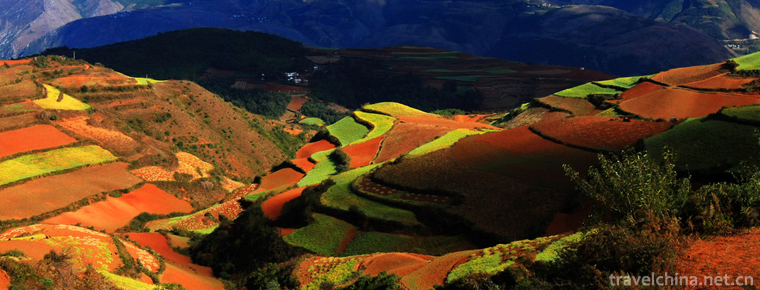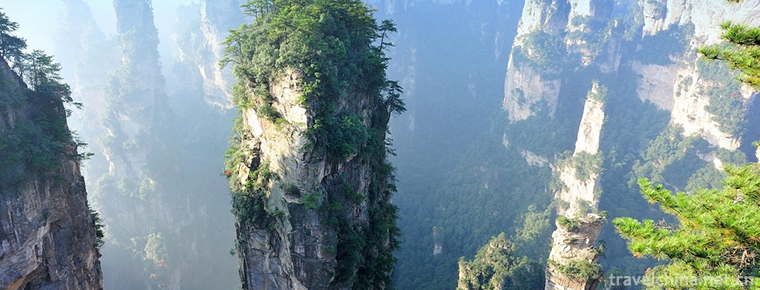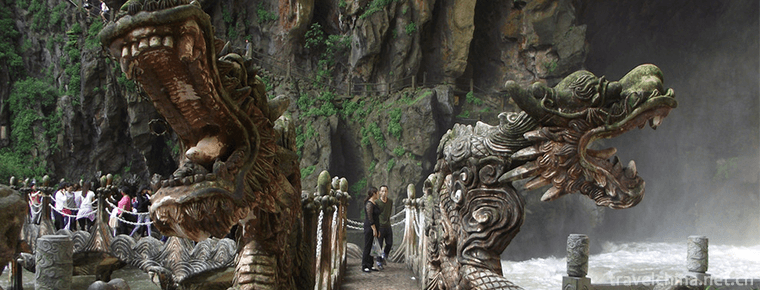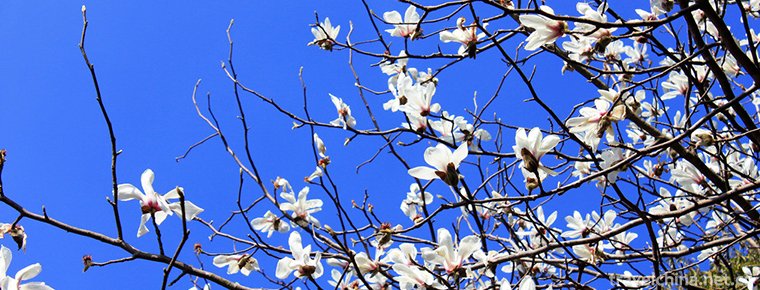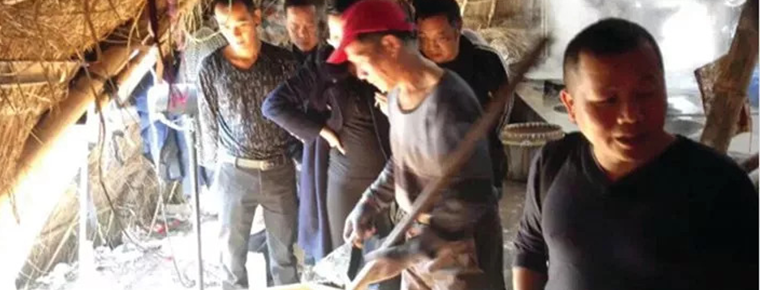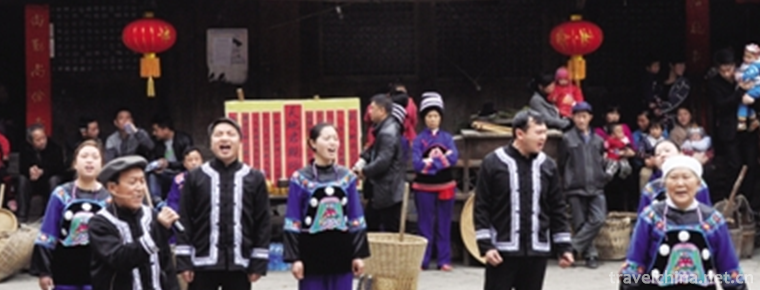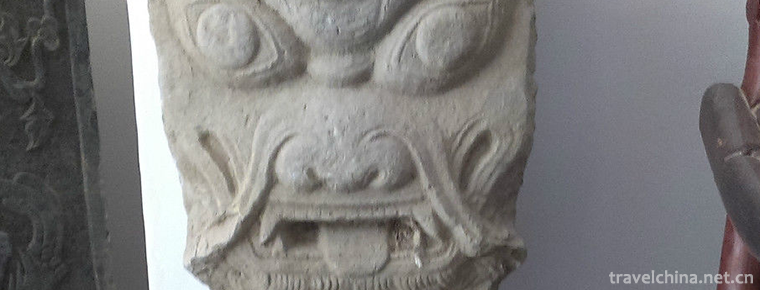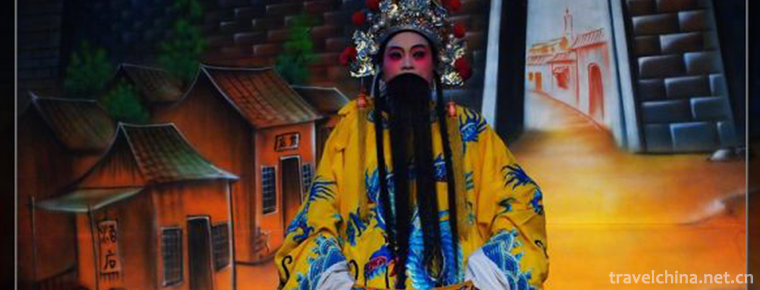Guwo Yushu Samurai Dance
Guwo Yushu Samurai Dance
Samurai dance is a unique style of etiquette folk dance spread in Yushu. It is called Guowa (or Guowa) in Tibetan. Guo refers to weapons in Tibetan. It means warriors with weapons. Wo refers to dancers who perform in important ritual occasions of temples and tribal people.
Historical origin
Historically, Yushu is a famous town of "Tang-Fan Ancient Road". When Princess Wencheng entered Tibet in the seventh century A.D., she had a magnificent journey of "flag display, ceremony opening, magnificence". She stayed here for a long time through Yushu, while resting her whole horse, training soldiers and spreading the original production technology. The princess also sent people to carve a Buddha statue and eight Bodhisattvas statues on the rocks of Beku, Yushu, and built a temple. The opening ceremony was held. The temple was named "Da Ri Tathagata Temple". It was worshipped by the local people. So far, the incense is very strong and the believers are endless.
The princess's entrance to Tibet has played a certain role in promoting the development of Tibetan culture and economy. This kind of honor guard and soldier drill in the Central Plains has been absorbed by the local Ben religion and become the ritual beach of Ben religion. Ben religion is the Tibetan primitive religion. Its main feature is a variety of worship. All things are spiritual. Samurai dance is an important part of Ben sacrificial activities.
When Princess Wencheng entered Tibet, Ben religion was still the state religion of the Tubo Dynasty. The struggle between Buddhism and Benzene had not yet become white-hot. Ben religion, in order to consolidate its dominant position, used the form of ceremonial guard in the Central Plains to strengthen and propagate its doctrine in sacrificial ceremonies.
For example, when performing a warrior dance, the first to appear is a number of warriors, who shoot and shout in order to worship the gods and clean the venue. This kind of shouting guns and shouts are common in Tibetan sacrificial activities. Next came the Tibetan flag and the music of Okingling, Sigu and Rao. Then two rows of warriors with crossbows and swords stepped out slowly and stepped on the music. This was very similar to the situation of Princess Wencheng entering Tibet described in the History of Da Ri Tathagata Temple. It was also similar to the murals of princesses entering Tibet in Tibetan temples we saw. It can be seen that the performance form of samurai dance was indeed influenced by the original Chinese language. Influences of chemical and benzene teaching stalls.
Spiritual meaning
Tibetans are fascinated by the worship of Buddhism, and Buddhism permeates the whole life of Tibetans. Yushu people think that performing Guowa is "God and I are happy together", and it also contains a kind of dignity, praise and perfection, which is the embodiment of self-spirit. Samurai dancers are adult men. They must be devout native people. It is forbidden to impart knowledge to others and women to sing and perform. Otherwise, they are impure to God.
Guowa's performance time must be selected for a specific day, time and star. Everyone not only enthusiastically participates, but also wears the most luxurious clothes in order to be auspicious. Dancers wear high eaves, red spikes, jewelry and jade hanging at the neck, wearing brocade silk ribbon, waist knife, brocade and satin clothes with black and white matching otter skin edge, appear noble, elegant, dignified, this is the highest etiquette dress of Yushu men.
Dance characteristics
Collective large-scale dance, the number of performers is unlimited, generally more than 40 people. Because the participants are middle-aged and old people, with luxurious clothes, solemn music and simple movements, they are dignified, solemn and mysterious.
From the appearance to the end of the dance, the choreography is rigorous, breaking the single change of the traditional folk dance troupe, and combining the ritual of "Yitan" exorcising ghosts and Demons and eliminating disasters with the content of ancient military exercises. Musical instruments with big drums, big rao, big trumpet, magnificent momentum, majestic. Dance emphasizes strength and momentum, calm and steady, bold and stretching.
The formation of warrior dance, no matter how long, as an early folk sacrificial and ritual dance, is very successful in both art and thought. It is a wonderful flower in the early Tibetan folk songs and dances, from which we can see the early Tibetan multi-cultural exchanges and fusion, but also the new era of Qinghai Yushu fresh cultural card.


-
Dongchuan Red Land Scenic Area
"Dongchuan Red Earth" is located in the north-east direction of Kunming.
Views: 154 Time 2018-10-21 -
zhangjiajie national forest park Avatar Filming place
Zhangjiajie national Forest Park is located in Zhangjiajie City, northwest of Hunan province. On September 25, 1982, with the approval of the State Council of the People's Republic of China.
Views: 210 Time 2018-10-28 -
Longgong Scenic Area of Anshun City
Located in the southern suburb of Anshun City, Longgong Palace is adjacent to Huangguoshu Scenic Area and 116 kilometers away from Guiyang City, the provincial capital..
Views: 129 Time 2018-12-12 -
Haitangshan Scenic Area
Haitangshan Mountain is one of the top ten scenic spots in AAAAAA, National Forest Park, National Nature Reserve, Provincial Key Cultural Relics Protection Unit and Province.
Views: 147 Time 2019-01-13 -
Zhangjiakou Zhangbei Grassland
Zhangbei grassland is located in Zhangbei County, 70 kilometers northwest of Zhangjiakou. It consists of two grasslands, Zhongdu and Angoli. In Zhangbei grassland, you can ride horses and shoot arrows.
Views: 172 Time 2019-03-10 -
Traditional Sugar making Techniques
In the memory of many Wenzhou people, when they were young, they were short of doctors and medicines, but the old people had many earthen prescriptions which were very useful..
Views: 97 Time 2019-04-21 -
Nanxi chant
Nanxi chant is popular in Qianjiang District of Chongqing City. Its origin can be traced back to Tang Dynasty. Its embryonic form is Tujia peasants'work chant and folk song chant, which are similar to.
Views: 114 Time 2019-06-07 -
Taishan Stone Dang Custom
Taishan Stone Dangdang Custom is a relic of ancient people's worship of spiritual stones. Mountain and stone are regarded as personality by myth, which is a typical traditional folk culture that has b.
Views: 139 Time 2019-06-18 -
Wuju Opera
Wu Opera, commonly known as Jinhua Opera, is one of the local operas in Zhejiang Province. It centers on Jinhua area and is popular in Jinhua, Lishui, Linhai, Jiande, Chun'an, Yushan, Shangrao, Guixi,.
Views: 220 Time 2019-06-30 -
Jiufeng Mountain Scenic Area
Jiufeng Mountain is located in Dabao Township in the northwest of Pengzhou. It is about 97 kilometers away from Chengdu, with an altitude of more than 3315 meters. It is the crown of Pengzhou mountains, a sacred and mysterious area.
Views: 221 Time 2020-11-05 -
Hydrology of Neijiang River
Tuojiang River is the main river in the urban area. It flows through Zizhong, Dongxing and Shizhong District. It is the main waterway transportation route in the city. Since ancient times, there has been a busy scene description of "boats of ten thousand trees.
Views: 299 Time 2020-12-16 -
Education in Neijiang
By the end of 2019, there are 1170 schools at all levels in Neijiang City, with 570100 students and 39400 teaching staff. There are 689 kindergartens with 88900 students; 274 primary schools with 205400 students; 137 junior high schools with 126400 students;.
Views: 349 Time 2020-12-16
